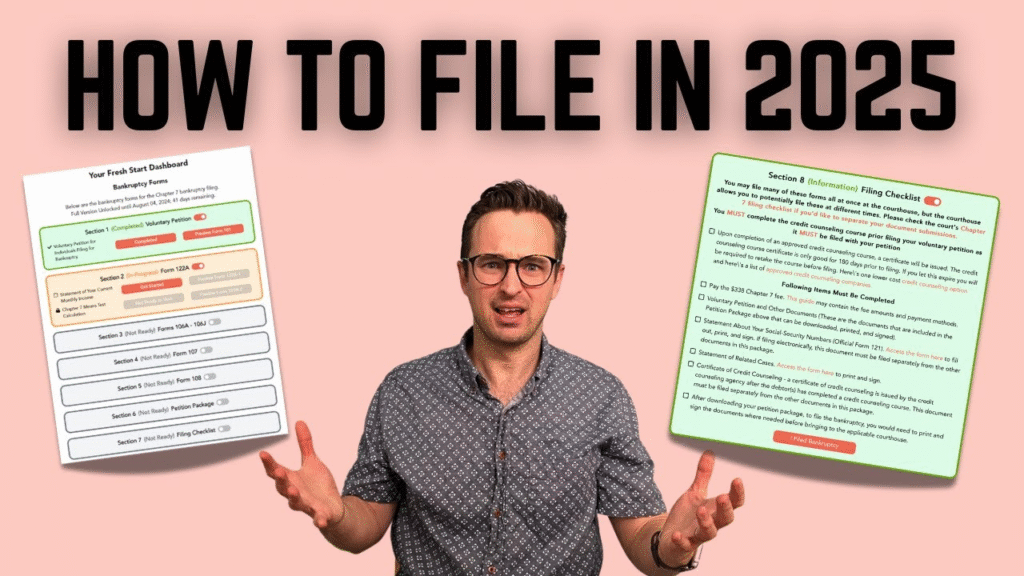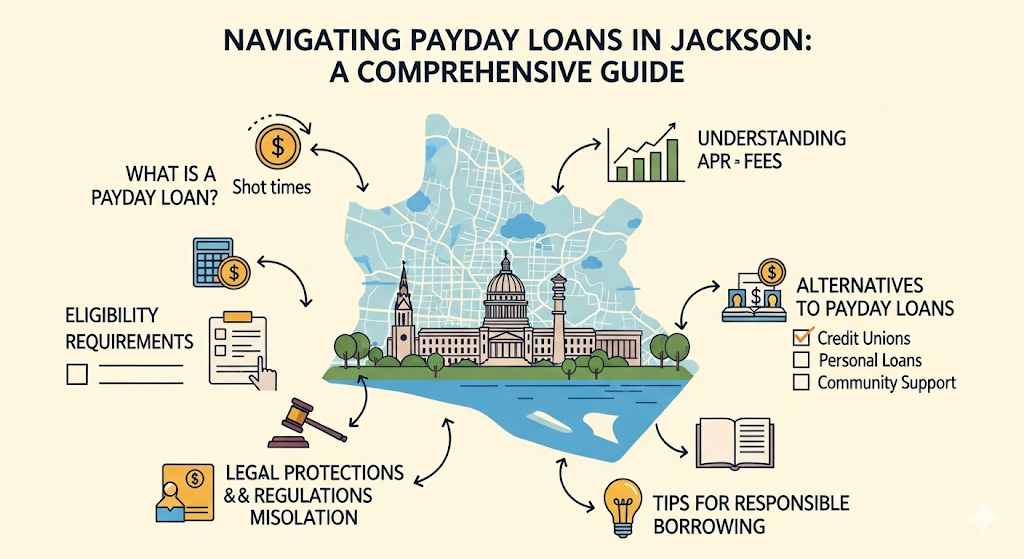
How to File Chapter 7 with No Money: A Practical Guide to Going Bankrupt When You’re Broke
When you’re deep in debt and unable to pay for even basic expenses, the idea of filing for bankruptcy can feel impossible—especially when you’re told you need hundreds or even thousands of dollars to get started. The irony? You’re too broke to declare you’re broke.
Thankfully, there are ways to file Chapter 7 bankruptcy even if you have little or no money. This detailed guide explains how you can navigate the process without cash on hand—using waivers, free legal aid, and smart planning to get the financial reset you need.
Chapter 1: Understanding Chapter 7 Bankruptcy
1.1 What Is Chapter 7 Bankruptcy?
Chapter 7 bankruptcy is a legal process that helps individuals eliminate unsecured debts like:
- Credit card debt
- Medical bills
- Payday loans
- Personal loans
In exchange, your non-exempt assets may be liquidated to repay creditors. But most filers keep everything they own due to state and federal exemptions.
1.2 Who Is It For?
Chapter 7 is ideal if:
- You earn below your state’s median income
- You have little to no assets
- You are overwhelmed with debt and can’t repay it
1.3 What It Can’t Do
Chapter 7 won’t eliminate:
- Student loans (except in extreme hardship cases)
- Child support or alimony
- Recent taxes
- Court fines or criminal penalties
Chapter 2: Costs of Filing Chapter 7 Bankruptcy
2.1 Standard Costs
- Filing Fee: $338 (as of 2025)
- Credit Counseling & Debtor Education: ~$25–$50 total
- Attorney Fees: $500–$2,000+ (if hiring a lawyer)
2.2 Why These Fees Are a Barrier
- Most people considering bankruptcy are already struggling
- Lenders are still demanding payments
- You may be unemployed or have garnished wages
But here’s the good news: there are legal ways to eliminate or postpone these costs.
Chapter 3: Filing Chapter 7 Without Money—Your Options
3.1 Request a Fee Waiver
If your income is below 150% of the federal poverty level, you may qualify to waive the $338 filing fee.
How to Apply:
- Fill out Form 103B: Application to Have the Chapter 7 Filing Fee Waived
- Include documentation of your income and expenses
- File it with your bankruptcy petition
The court will:
- Approve it
- Deny it
- Schedule a hearing to review it
3.2 Request to Pay in Installments
If you don’t qualify for a waiver but can pay over time:
- File Form 103A: Application to Pay the Filing Fee in Installments
- You’ll propose a payment plan (e.g., $84.50 per month over 4 months)
- You must pay the full amount before receiving a discharge
3.3 Use a Pro Bono Bankruptcy Attorney
Many areas have free or sliding-scale legal help:
- Legal Aid Societies
- Law School Clinics
- Volunteer Lawyer Programs
- Local Bar Associations
Search sites like:
3.4 DIY Bankruptcy (Pro Se Filing)
Filing on your own is risky but possible:
- Download the required forms from www.uscourts.gov
- Follow local court rules carefully
- Attend all hearings and courses
Pros:
- Zero attorney fees
Cons:
- Easy to make mistakes
- Risk of case dismissal
- No help with exemptions, means test, or creditor negotiations
Chapter 4: How to Prepare Before Filing

4.1 Stop Paying Unsecured Debts
Once you decide to file, stop making payments on credit cards, medical bills, and payday loans. Save that money to:
- Pay court filing fees
- Cover essentials
4.2 Complete Required Credit Counseling
- Must be completed within 180 days before filing
- Must be from an approved provider
- Costs ~$10–$25 (some offer fee waivers)
4.3 Gather Documents
You’ll need:
- Tax returns (last 2 years)
- Pay stubs (last 6 months)
- Bank statements
- Bills and loan records
- Asset inventory
4.4 Know Your Exemptions
Understand what property is protected. Exemptions vary by state and can include:
- Primary home equity
- Vehicle up to a certain value
- Clothing and personal effects
- Tools of your trade
Chapter 5: Step-by-Step Filing Process Without an Attorney
5.1 Get the Forms
Visit: www.uscourts.gov/forms Download:
- Voluntary Petition (Form 101)
- Schedules A–J
- Statement of Financial Affairs
- Means Test Forms
- Creditor Matrix
5.2 Complete and File the Forms
- Fill out every section accurately
- Sign all required fields
- Submit your packet to the bankruptcy court clerk
Include:
- Credit Counseling Certificate
- Fee Waiver or Installment Plan Application
5.3 Receive Your Case Number
The court assigns a case number and trustee. This triggers the automatic stay, which:
- Stops collection calls
- Halts wage garnishments
- Freezes pending lawsuits
5.4 Attend the 341 Meeting of Creditors
- Occurs 3–6 weeks after filing
- You must attend
- Trustee will ask questions about your finances under oath
- Creditors may show up, but rarely do
5.5 Complete Debtor Education Course
- Must be completed before discharge
- Submit the completion certificate to the court
Chapter 6: What Happens After Filing
6.1 Debt Discharge
If approved, your eligible debts are discharged in about 90–120 days.
6.2 Credit Impact
- Credit score may drop initially
- Bankruptcy stays on your report for 10 years
- You can rebuild credit faster than expected with:
- Secured credit cards
- On-time payments
- Budgeting and savings
6.3 Rebuilding Financially
- Create a budget and emergency fund
- Consider credit counseling or financial literacy classes
- Use apps to track and manage expenses
Chapter 7: Myths About Filing with No Money
Myth 1: You Must Hire an Attorney
You can file pro se or get free legal help.
Myth 2: You’ll Lose Everything
Most filers keep their car, home, and personal property.
Myth 3: You Can’t Afford to File
With fee waivers, legal aid, and planning—you can.
Myth 4: Bankruptcy Means Financial Failure
It’s a tool for financial recovery, not failure.
Chapter 8: Real-Life Stories of Filing Chapter 7 with No Money

Sarah, Single Mother
Lost her job during the pandemic. Legal aid helped her file. She kept her car and now has no credit card debt.
James, College Grad
Used a fee waiver and filed pro se after racking up medical bills. It was tough but manageable. He now works full-time and is rebuilding his credit.
Dana and Carlos, Gig Workers
Filed with the help of a legal clinic. Now debt-free and saving for a home.
Conclusion
Filing Chapter 7 with no money is not easy—but it is absolutely possible. With the right resources, planning, and support, you can take control of your financial future.
Whether you apply for a fee waiver, use free legal help, or file on your own, this process can offer the fresh start you deserve.
Final Tip:
Don’t let the cost of filing stop you from seeking relief. Start researching local legal aid organizations and prepare your documents today.




